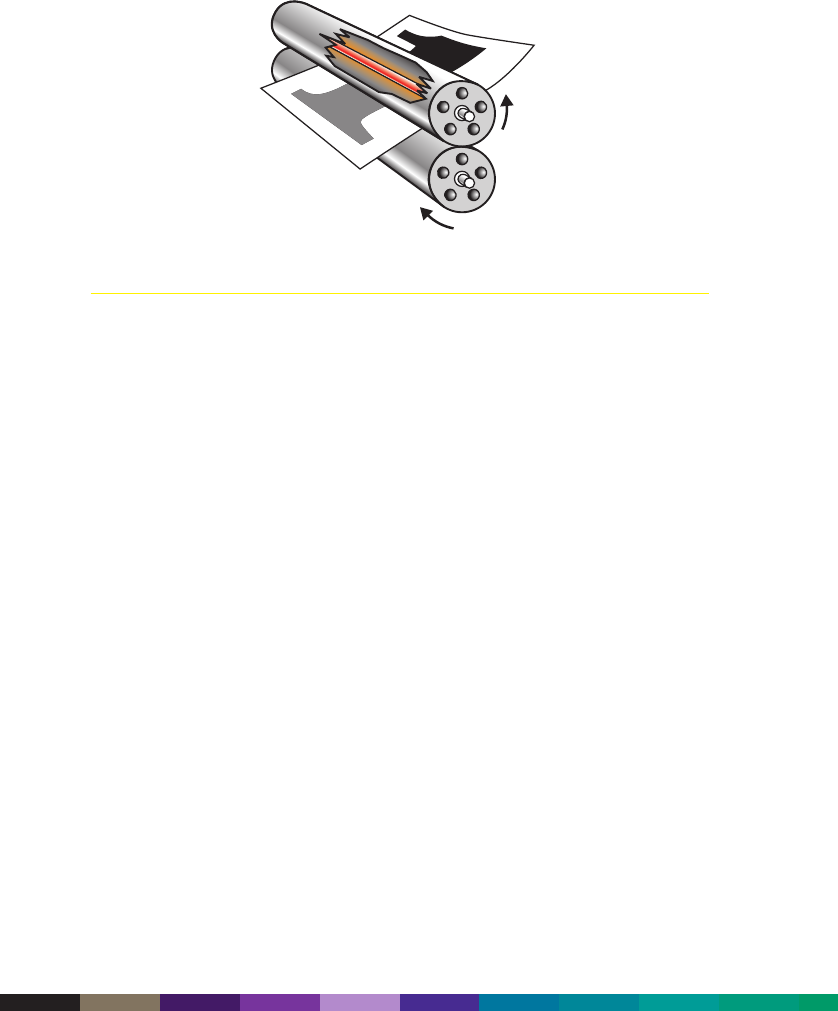
Paper influences on print quality
Variables in the papermaking process can influence the quality and performance of the
finished paper. While some variables are controlled to create specific stocks, other may
result in imperfections.
Formation
Formation is how fibres are distributed on a sheet. Poor fibre formation can cause
mottle or uneven, spotty ink/toner distribution in images with high solid area coverage.
To gain insight into the formation of paper, hold a sample sheet up to a light. If the
paper has good formation, it looks even and consistent. If it has poor formation, it will
appear splotchy and uneven.
Well-formed, premium papers also feel better to the hand, and help create professional
quality results. Good fibre formation is especially important when documents include
photographs or have high ink coverage.
Grain direction
Grain direction is the orientation of fibres with respect to the long edge of the paper
and is a product of the papermaking process. For example, in an A4 sheet, the fibres of
a long grain sheet are parallel to the 297 mm dimension of the paper. The fibres of a
short grain sheet are parallel to the 210 mm dimension.
Heavy stocks fold most smoothly parallel to the grain. Folds against the grain may
cause paper to crack and appear lumpy and ragged. This is why printers prefer to fold
jobs with the grain.
5 - 2
DocuColor 2000 series design guide


















